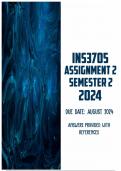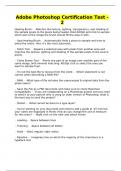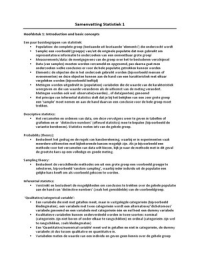Exam (elaborations)
INS3705 Assignment 2 Semester 2 2024 | Due August 2024
- Course
- Institution
QUESTION 1 Identify four knowledge management processes in any organisation of your choice and discuss the purpose of each knowledge management process and two examples of artificial intelligent technologies that can be used in each of the knowledge management processes (mini essay). [10) QUESTIO...
[Show more]





